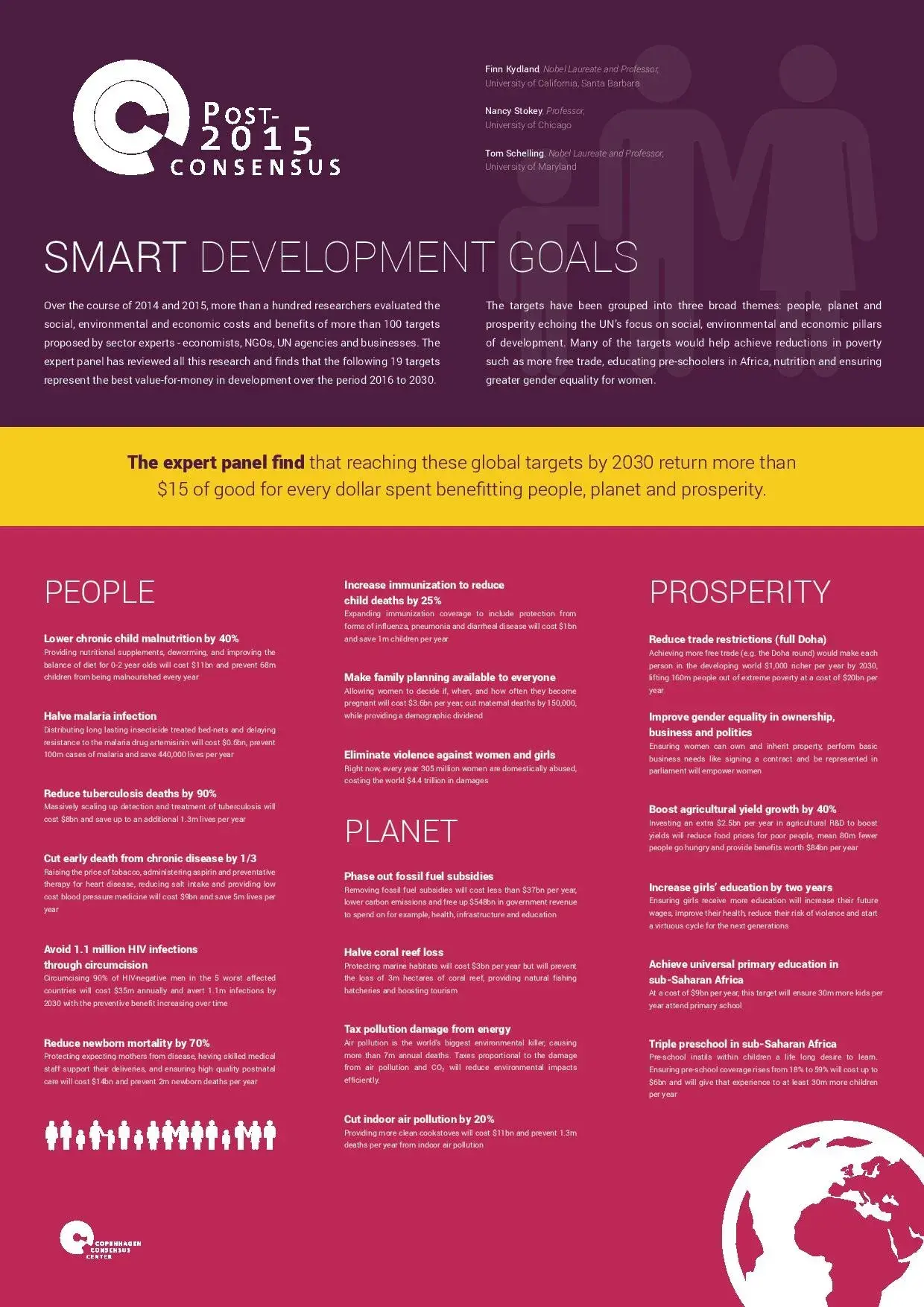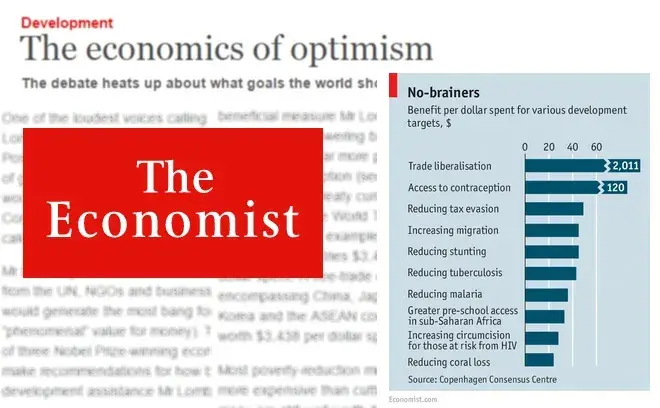Poverty: What's the smartest SDG target?

Despite great progress over the last 20 years, just over 1 billion continue to live in extreme poverty. Much discussion in the post-2015 agenda revolves around addressing this ongoing problem and it is unsurprising that numerous poverty targets have been proposed – from more social inclusion, to full employment, more happiness, increased resilience and more.
But which one of these targets is best?
As reported in Huffington Post, the best approach is a simple one: let’s continue focusing on reducing extreme poverty and de-prioritize the rest.
It will not come without challenges – we know surprisingly little about poverty because of poor data, the remaining poor in non-poor countries are often marginalized groups and some of the catalysts for dramatic poverty reduction in Asia cannot be replicated in currently poor regions in Africa. But the academic analysis shows that a straight-forward focus on poverty can for each dollar spent do $5 worth of good in poverty alleviation.
Previously in this project we have also found that a focus on free trade through a successful Doha Round can lift 160 million out of poverty by 2030. For each dollar spent, it can do about $2,000 of good.
Focusing on social protection systems and full employment may lead to unintended distortions in job markets that actually hurt the poor and vulnerable. Targeting increased resilience from natural disasters risks over-focusing on one of the myriad of problems facing the poor. Finally, happiness indicators, while intuitively appealing, are difficult to compare across time and between different groups of people.
You can read all the papers on poverty here and download the one page PDF here.
The smartest targets for the post-2015 development agenda
What are the smartest targets for the post-2015 development agenda?
In a world of limited resources, we can’t do everything, but how should we prioritize? The Copenhagen Consensus Center provides information on which targets will do the most social good relative to their costs. The final decision on choosing goals will definitely rest on a number of factors, not just economics – but knowing the costs and benefits provides an important piece of information.
The Post-2015 Consensus brought together, renowned experts from the UN, NGO and private sectors with 60 teams of economists to produced 100+ research papers to establish the most effective targets for the post-2015 development agenda within 22 core issue areas: Air Pollution, Biodiversity, Climate Change, Conflict & Violence, Data for Development, Education, Energy, Food Security, Gender Equality, Governance & Institutions, Health: Chronic Diseases, Health: Health Systems, Health: Infant Mortality & Maternal Health, Health: Infectious Diseases, Infrastructure, Illicit Financial Flows, Nutrition, Population & Demography, Poverty, Science & Technology, Trade, and Water & Sanitation.
An Expert Panel including two Nobel Laureates has reviewed all of this research and identified 19 targets that represent the best value-for-money in development over the period 2016 to 2030.
Only have three minutes? Watch our introduction video to the Post-2015 Consensus project.

Making prioritization a factor in the post-2015 debate
An overview of Copenhagen Consensus' ground-breaking research which is shaping the thinking for the 193 governments about to prioritize the smartest development goals for 2016-2030. If you've just read the article in The Economist you might be interested in exploring more about our project, and the research we've undertaken so we have put together an online supplement with more in-depth information.


